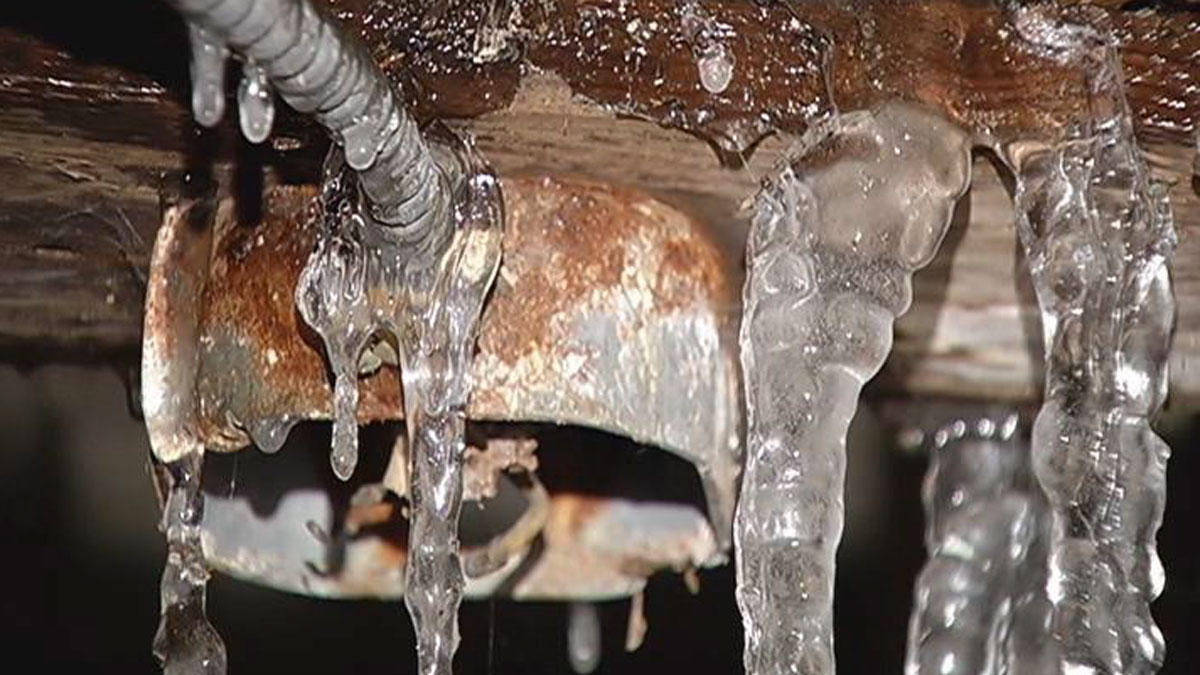Tips to Maintain Pipes from Cold Weather Issues: Crucial Guidance
Tips to Maintain Pipes from Cold Weather Issues: Crucial Guidance
Blog Article
The author is making several good pointers on Helpful Tips to Prevent Frozen Pipes this Winter in general in this great article further down.

Winter can ruin your pipes, particularly by freezing pipes. Here's just how to stop it from taking place and what to do if it does.
Introduction
As temperature levels decrease, the risk of icy pipelines increases, potentially bring about expensive repair work and water damages. Recognizing how to stop icy pipelines is essential for home owners in chilly climates.
Comprehending Frozen Pipelines
What causes pipelines to ice up?
Pipes ice up when exposed to temperature levels below 32 ° F (0 ° C) for prolonged periods. As water inside the pipelines ices up, it expands, taxing the pipe walls and possibly causing them to rupture.
Threats and damages
Frozen pipelines can lead to water system disruptions, residential or commercial property damages, and pricey repairs. Burst pipes can flooding homes and create considerable structural damage.
Signs of Frozen Pipeline
Identifying icy pipes early can prevent them from bursting.
Exactly how to recognize icy pipes
Look for decreased water circulation from taps, unusual smells or sounds from pipelines, and noticeable frost on exposed pipelines.
Prevention Tips
Insulating at risk pipelines
Cover pipes in insulation sleeves or utilize warmth tape to secure them from freezing temperature levels. Focus on pipes in unheated or exterior locations of the home.
Heating methods
Keep indoor areas sufficiently heated, specifically areas with pipes. Open cabinet doors to enable warm air to distribute around pipelines under sinks.
Safeguarding Exterior Plumbing
Yard hose pipes and exterior faucets
Detach and drain garden tubes before wintertime. Install frost-proof faucets or cover outdoor taps with shielded caps.
What to Do If Your Pipes Freeze
Immediate actions to take
If you believe frozen pipelines, keep taps open to soothe pressure as the ice melts. Make use of a hairdryer or towels soaked in warm water to thaw pipelines slowly.
Long-Term Solutions
Structural modifications
Consider rerouting pipes away from outside walls or unheated areas. Include extra insulation to attic rooms, basements, and crawl spaces.
Upgrading insulation
Buy top notch insulation for pipelines, attics, and wall surfaces. Proper insulation helps maintain constant temperatures and decreases the risk of frozen pipelines.
Verdict
Preventing icy pipes requires proactive measures and fast actions. By comprehending the causes, signs, and safety nets, homeowners can shield their pipes during cold weather.
5 Ways to Prevent Frozen Pipes
Drain Outdoor Faucets and Disconnect Hoses
First, close the shut-off valve that controls the flow of water in the pipe to your outdoor faucet. Then, head outside to disconnect and drain your hose and open the outdoor faucet to allow the water to completely drain out of the line. Turn off the faucet when done. Finally, head back to the shut-off valve and drain the remaining water inside the pipe into a bucket or container. Additionally, if you have a home irrigation system, you should consider hiring an expert to clear the system of water each year.
Insulate Pipes
One of the best and most cost-effective methods for preventing frozen water pipes is to wrap your pipes with insulation. This is especially important for areas in your home that aren’t exposed to heat, such as an attic. We suggest using foam sleeves, which can typically be found at your local hardware store.
Keep Heat Running at 65
Your pipes are located inside your walls, and the temperature there is much colder than the rest of the house. To prevent your pipes from freezing, The Insurance Information Institute suggests that you keep your home heated to at least 65 degrees, even when traveling. You may want to invest in smart devices that can keep an eye on the temperature in your home while you’re away.
Leave Water Dripping
Moving water — even a small trickle — can prevent ice from forming inside your pipes. When freezing temps are imminent, start a drip of water from all faucets that serve exposed pipes. Leaving a few faucets running will also help relieve pressure inside the pipes and help prevent a rupture if the water inside freezes.
Open Cupboard Doors
Warm your kitchen and bathroom pipes by opening cupboards and vanities. You should also leave your interior doors ajar to help warm air circulate evenly throughout your home.

As an avid person who reads on 6 Ways to Prevent Frozen Pipes, I imagined sharing that blog post was smart. Remember to take a moment to promote this blog posting if you appreciated it. I love your readership.
Information Here Report this page